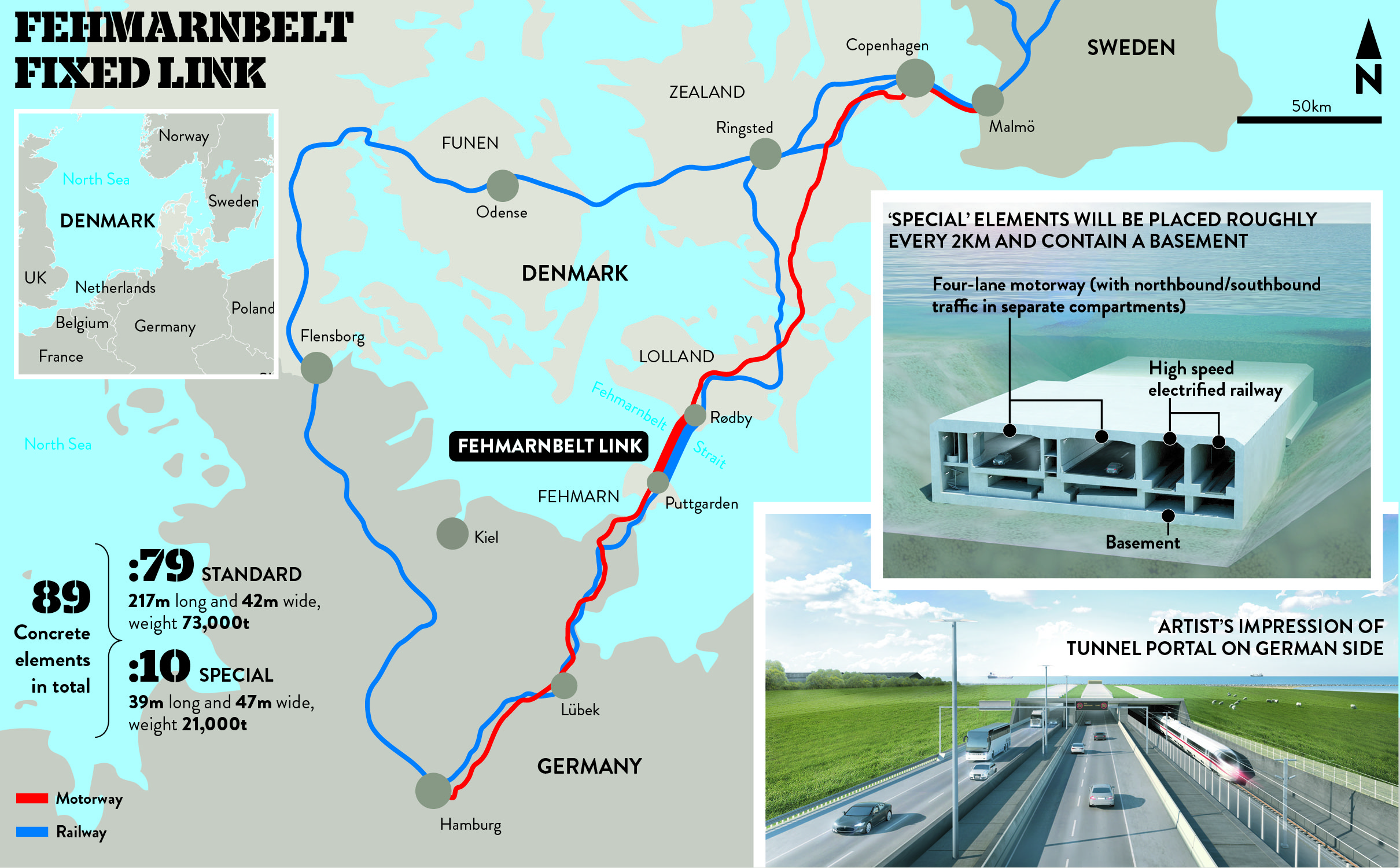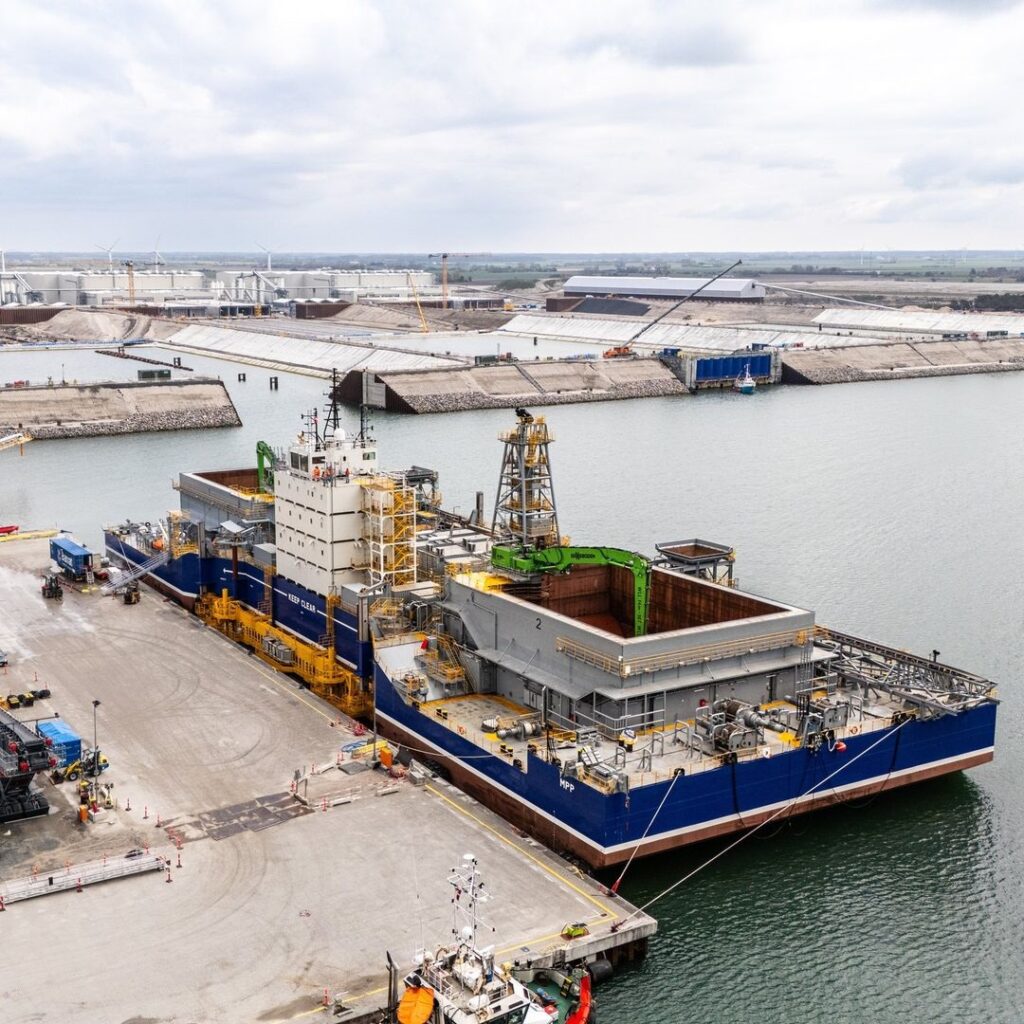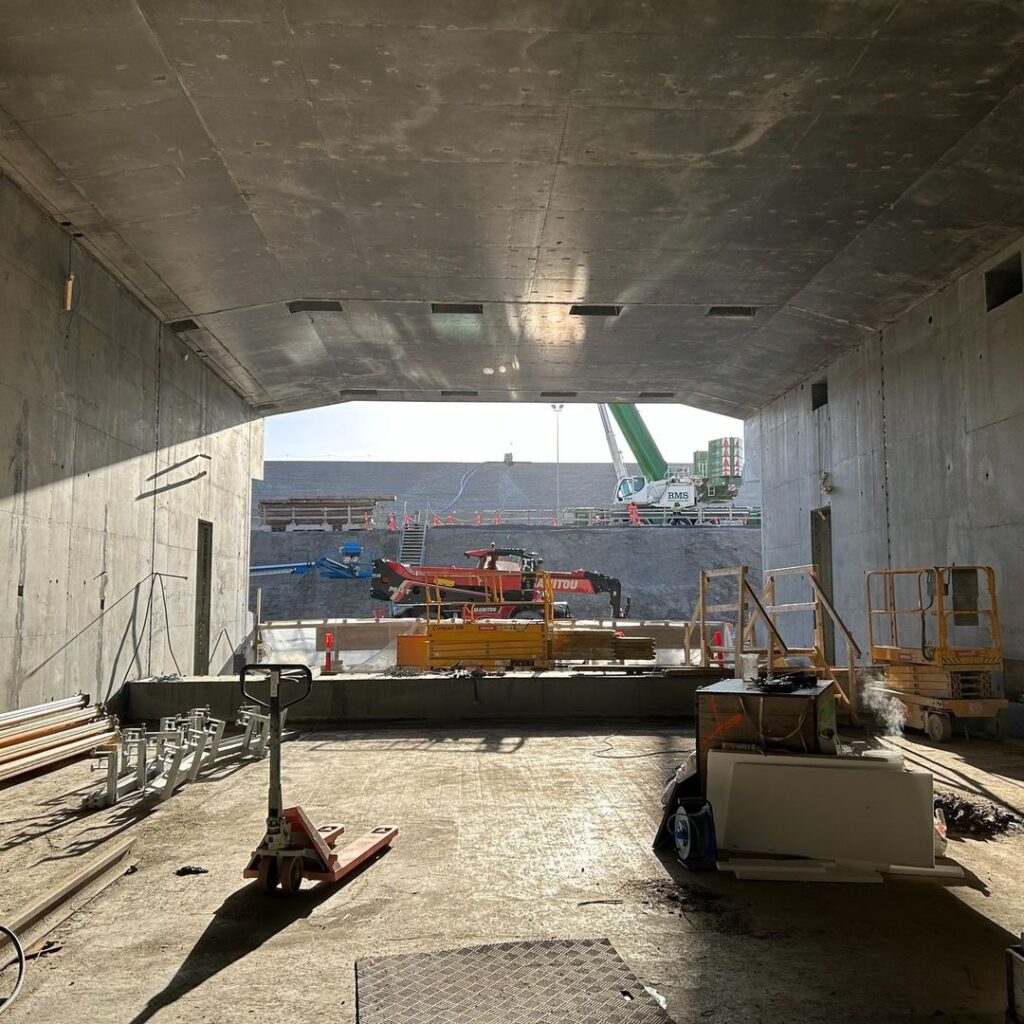Fehmarnbelt Tunnel | 18km trench dredging complete and Danish portal submerged

This post was originally published on this site
Development of the Fehmarnbelt tunnel between Germany and Denmark has celebrated two milestones with the completion of dredging for the route and the submersion of the Danish portal.
Dredging of the 18km route between the Danish island of Lolland and the German island of Fehmarn has taken almost three years and seen around 15Mm3 of soil removed from the seabed.
The works were carried out by a consortium called Fehmarn Belt Contractors (FBC) featuring two Dutch companies, Boskalis and Van Oord. At peak work, FBC’s combined fleet had 70 vessels involved in the dredging. This included “trailing suction hopper dredgers, backhoe dredgers, specially developed and built grab dredge pontoons and boulder clearance vessels” according to FBC project director Bart Pröpper.
He added: “On all these vessels, we made the necessary improvements to deal with the difficult soil types at great depths and get the job done in time.”
The dredging works turned up numerous blocks of granite said to be from the Ice Age, which were difficult to remove. The largest was 70t and has been set up on display at the construction site at Rødbyhavn on Lolland.
Femern A/S is the project promoter and deputy technical director Pedro da Silva Jørgensen has said that the dredging project was “by far the largest” in Denmark’s history.
He added that it had been a “difficult task” because “the subsoil between Denmark and Germany is a complex mixture of different soil types from soft clay to hard limestone”. He said that “significant challenges” along the way had been solved in collaboration with the project’s contractors.
Most of the excavated soil has been placed off the coast of Rødbyhavn to create around 300ha of new land. In time this land will become a mixture of nature and recreational areas featuring beaches and hiking trails.
In the coming months, FBC will turn its attention to removing the temporary dike in front of the Danish tunnel portal, preparing for the immersion of the first tunnel segment later this year.
Once completed in 2029, the Fehmarnbelt Fixed Link will be the world’s longest immersed tube tunnel. It will accommodate both road and rail traffic, slashing journey times and opening up a direct transport corridor from Northern Europe to the centre of the continent.
The tunnel is an immersed tube tunnel that will comprise 89 precast concrete segments of up to 217m in length and 73,000t in weight. They are being cast on site and will be joined together on the seabed in the excavated trench.
Immersion of Danish portal
At the end of February, Femern A/S confirmed the completion of the construction of the first 100m of the tunnel including the Danish portal.
This section is now under water after the removal of the temporary dike that was keeping water out.
The next step is to remove the outer, temporary dike to reveal the future coastline with the new dike. This work is expected to be completed in the summer.
A year of milestones
Fehmarnbelt head of communications Morten Kramer Nielsen said: “2024 is full of milestones for the project. Nevertheless, it now feels very special that after three years of work we can see a small part of the tunnel where it belongs – under water. Our children, grandchildren and great-grandchildren will take it for granted that you can take a short trip to Germany under the Fehmarnbelt, but for those of us who build it, it is a moving moment.”
Last year also saw numerous milestones on the project.
A factory for casting the elements has been constructed on Lolland and the production commenced in July last year. The 11m deep basins outside the factory, which connect it to the water in the Fehmarnbelt, were filled in September.
Meanwhile, German national railway company Deutsche Bahn has commenced the construction of 88km of new high-speed line that will connect through the Fehmarnbelt tunnel.
Femern A/S is currently procuring for the £176.4M railway track and catenary systems construction contract. It is to be a “railway system of the highest standard” with an energy-efficient solution for traction power.
The Fehmarnbelt Fixed Link is being constructed by a consortium called Femern Link Contractors, which features Vinci, Aarsleff, Wayss & Freytag, Max Bögl, CFE, Solétanche Bachy, Bam Infra, Bam International and Dredging International.
Like what you’ve read? To receive New Civil Engineer’s daily and weekly newsletters click here.





Responses